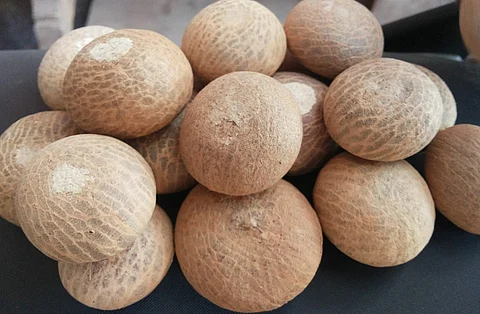

Areca nuts grown in Uttara Kannada district have been given a geographical indication (GI) tag.
The Registrar of Geographical Indications has decided to grant the GI tag to 'Sirsi Supari' areca nuts grown in Sirsi, Yellapur and Siddapura taluks of the district.
An agriculture cooperative, Totagars’ Cooperative Sale Society (TSS) Ltd, based in Sirsi is the registered proprietor of the 'Sirsi Supari'. Speaking to TNM, Ravish Hegde, the cooperative's general manager, says that the GI tag will help customers identify authentic Sirsi-grown areca nuts. "Areca nut is grown in several places and the 'Sirsi Supari' is only around 5% of the areca nuts grown in Karnataka but a GI tag will help protect the identity of the Sirsi areca nut. The Sirsi areca nut has a unique taste and is produced in chali (white) variety and red variety," explains Ravish.
Around 4 lakh areca nuts are grown annually over a 40,000 acre area in the three taluks. The areca nuts are sold in Karnataka and transported to places like Gujarat, Maharashtra, Rajasthan and New Delhi.
The process of obtaining the tag began in 2013. Scientific research was submitted to prove that the 'Sirsi Supari' is unique. One variety of the areca nut is medium sized, flat rounded and ash coloured. The fruit turns from yellow to scarlet while ripening and consists of a thick fibrous pericarp (husk) which encloses this seed.

Ravish further adds that the GI tag will also help find a better price for farmers growing the crop. "We can inform the customer that this is an authentic Sirsi-grown areca nut since several distributors mix areca nuts grown in different areas and sell at different prices. If we get good premium price, this will also help all the farmers growing the crop in these three taluks," he adds.
The areca nut is produced in various ways. The 'chali' or white variety is made by peeling nuts after they ripen and then sun drying them. The red areca nut is produced by harvesting the tender nuts, boiling and coloring them before sun drying them.